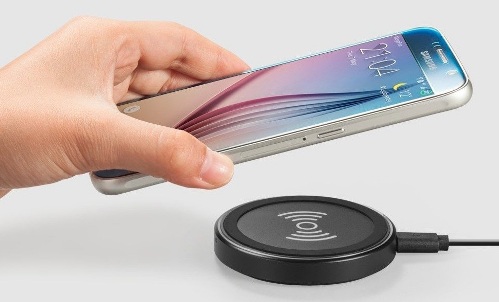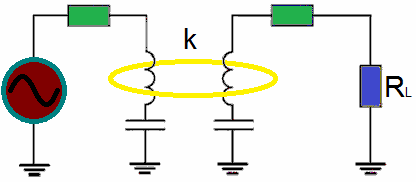Categories: How does it work
Number of views: 12,221
Comments on the article: 2
How the wireless charging for the phone is arranged and works
Mobile technology has tightly entered our daily lives, and the advent of wireless chargers is quite natural. After all, electronic consumer devices (such as smartphones, for example) should ideally work for a long time and without failures, while it is not very convenient to plug the plug into an outlet every time, and the plug into the gadget when you need to recharge it.
A set of wireless interfaces (Wi-Fi, Bluetooth, etc.) has long become a familiar attribute of many portable devices, so why not include an interface for wireless charging in this set? And modern technology has allowed this to be realized.

Of course, when charging wirelessly, the rechargeable mobile device should be at least 4 cm from the charger, but you must agree, this is more convenient than a wire extending from the plug. Sometimes during recharging there is a need to take a call, move away from the charger, then return the smartphone to a place near the transmitter of the charger. This is easier than plugging the plug each time.
And in some areas, for example in medicine, the technology of wireless charging of batteries is simply necessary (emergency devices, lamps on batteries, etc.). Not for nothing in recent years, such leading electronics manufacturers as Intel, Samsung, NXP, Texas Instruments and many others have actively taken up the development of equipment and microcircuits for wireless chargers.
Fundamentally, wireless charging technology is based on the transfer of electricity by electromagnetic induction. In the near zone of induction, the reactive interaction of the transmitter and receiver is greatest. So, for a frequency of 10 MHz, the near zone extends to 4.7 meters.
Due to the phenomenon of electromagnetic induction, an induction current is excited in the closed loop of the receiver, while the transmitter circuit is the source of the alternating magnetic flux (inductor).
The system includes a couple inductors - a receiver coil and a transmitter coil, which are inductively coupled to each other. The alternating current of the primary coil (transmitter) forms a magnetic field that penetrates the turns of the secondary coil (receiver), and induces an emf on it.
The voltage from the pickup coil is used to charge the battery of the mobile device. And the closer the receiver is to the transmitter, the more energy the receiver receives. At large distances, the inductive coupling is scanty, and the system becomes ineffective. The coupling coefficient of the coils k is of great importance.

The mutual inductance of the circuits, the correspondence of the resonant frequencies, the quality factor of the receiver and transmitter coils - all this affects the quality of the wireless transmission of electricity from the transmitter to the charging device. At the resonant frequency, with a high quality factor of both circuits, with a high coupling coefficient of the coils, the efficiency of the system is greatest. This is obvious from antenna theory.
The Consumer Electronics Association classifies wireless charger technology by the magnitude of the loop coupling coefficient. If the coupling coefficient is up to 0.1, the system is called loosely coupled, and if the coefficient approaches 1, then it is a strongly coupled system. Strongly coupled systems are called magnetically inductive, while weakly coupled systems are called magnetic resonance. These two types of systems are fundamentally different.
Magnetic resonance technology is less critical to the mutual arrangement of the coils, and several receivers can work with one transmitter at once, that is, one charger can charge several devices at the same time. But here the distance is critical.
To achieve the best efficiency, the resonant frequency is selected that best interacts with the load resistance. The effective quality factor of magnetically inductive systems is much lower. With precise coordination in magnetic resonance technology, energy transfer occurs with the highest efficiency. It is important that during the operation of any type of system, it is necessary to precisely control the current parameters so that the efficiency of energy transfer does not decrease.

According to the WPC 1.1 specifications, the resonance frequency should be in the range from 100 to 205 kHz, and in the PMA specifications - from 277 to 357 kHz, with a Q factor of 30 to 50. According to A4WP specifications, the frequency is fixed, and the impedance matching of the receiver and transmitters must be strict. For magnetic resonance systems, the quality factor can reach 100.
As for efficiency, even 97 percent efficiency of wired chargers has not yet been achieved. Nevertheless, the advantage of magnetic resonance charging systems is obvious: the transmitter coil can be 12 times larger than the receiver coil, while you can place several receivers and charge three smartphones at the same time.
See also at bgv.electricianexp.com
:
